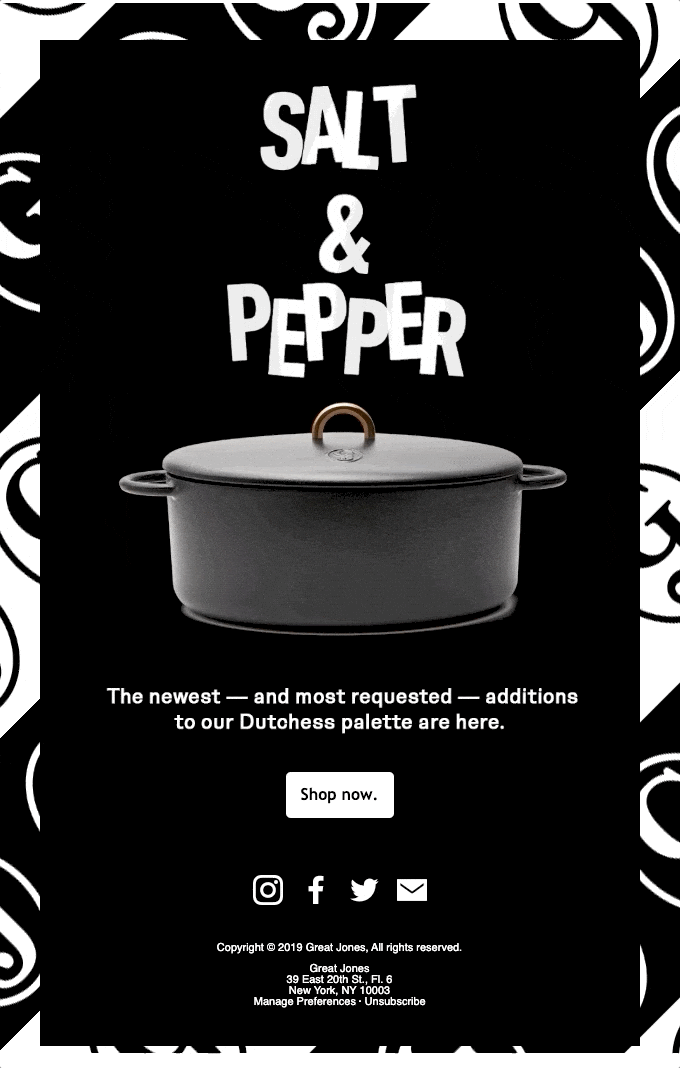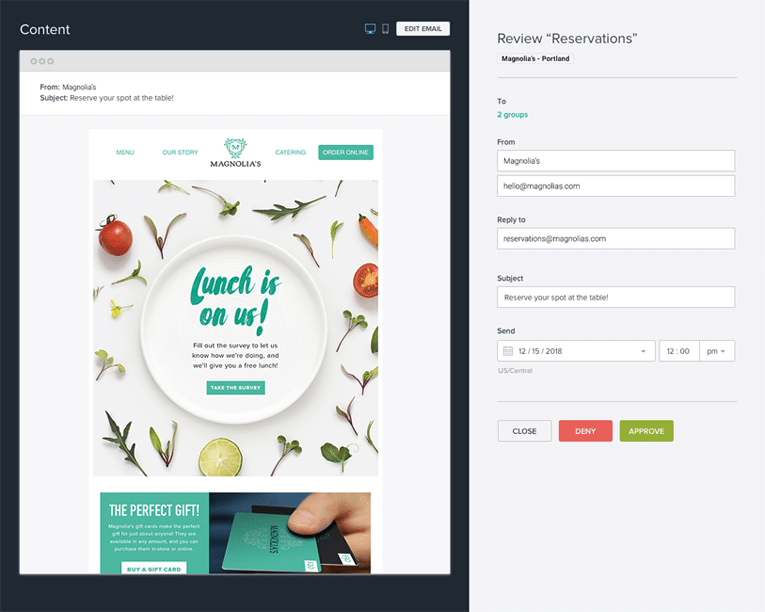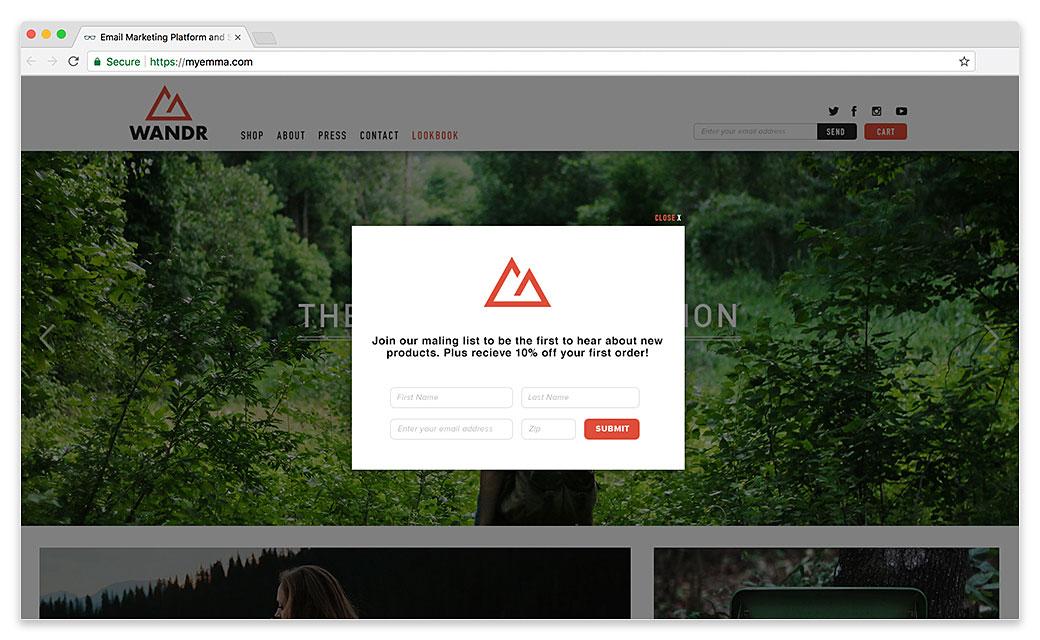5 Tips and tricks to reduce email unsubscribes
If you’re an email marketer, you probably spend a lot of your workday thinking about one important aspect: Subscriptions.
Email subscriptions are arguably the most important metric you track when promoting across this channel. If people are subscribed, they’re part of your core audience. You don’t have to “win them over.” However, you do have to try and keep them.
Though your email subscribers signed up to your list because they liked something you had to offer, you know that every marketer faces the dreaded phenomenon of unsubscribes. How can you reduce these to keep your list solid and growing?
Today we’ll discuss some strategies you can use to reduce email unsubscribe rates. No matter your skill level or the size of your email list, here are some tips and tricks.
Tip #1: Focused and concise copywriting
The first tip that email marketers should consider to reduce email unsubscribe rates involves their copywriting. The words you use are the foundation of your content. How you talk to your subscribers impacts your relationship with them. It isn’t always about what you say, but rather how you say it.
Good copywriting tells a story, entices the reader, connects with them, and makes them want to act. Whether that act is clicking through, making a purchase, or staying subscribed, it’s important they follow through with the desired action.
Email copywriting needs to have three primary qualities to be successful. They are:
Focus
Focused copy gets straight to the point. It doesn’t waste time on fluff or filler words. Think about why this matters in the context of a busy inbox. Readers may have dozens or even hundreds of emails to go through each day. This means they’re likely skimming. Tight, punchy copy doesn’t waste their time.
Creativity
Just because your copy isn’t fluffy doesn’t mean it has to be bland. Consider how using simple word choices can make a line seem more powerful. “Come get this deal today,” sounds bland. “Cash in on this deal now,” is much more impactful. Power words and strong verbs make for an exciting read and keep your subscribers hooked.
Flow
Flow refers to how well copywriting goes together. From the opening line to the conclusion, the points should follow one another logically. The best way to achieve good flow is to reread copy after you write it (and revise accordingly). Good flow makes your emails a pleasure to read, which makes readers want more.
Focused and creative copywriting that flows well is extremely valuable. Sometimes just improving your writing can be enough to dissuade people from unsubscribing.
Finally, don’t forget what’s arguably the most important part of your email copy: The subject line. It’s the first thing a person sees and can determine whether they’ll open the email or not. Subject lines follow the same formula—the only thing you’ll want to add is a bit of curiosity.
Consider asking a question or mentioning an important fact. If you get people curious, you convince them to click and find out more.
Tip #2: Visually inviting design
Design is crucial for the success of any business. Good design habits can help businesses perform twice as well as their competitors.
What makes good design? It’s all about visual appeal. Sections should be organized in a neat way that utilizes space properly. It should also make use of complementary colors, attractive font types, and pictures where applicable.
Source: Really Good Emails
This email shows how a proper color scheme and neatly organized sections of text look inviting. Add in text and images that alternate in each row, and you can see how it works for organizational purposes. Despite the amount of information provided, the well-thought-out design makes it very easy to read and doesn’t overwhelm the reader at a glance.
Here you can see how color schemes and animations can create a cool, flashy visual effect that makes for one fun presentation.
Source: Really Good Emails
Good email design can make your content fun, unique, and satisfying for busy readers who have a lot to go through. If they get this type of experience, they’re much less likely to unsubscribe.
When you’re experimenting with new designs, try a drag-and-drop builder to help you create stunning visuals in a short time. With this type of tool, there’s no need to worry about creating all original graphics or even outsourcing a separate artist.
Builders are one type of tool that help you create something your readers will want to see more of. This leads to the next point: How having the proper technology will make your job easier.
Tip #3: Use the right technology to test your content
Modern email marketers have plenty of tools at their disposal. Beyond just the aforementioned builder, you have a variety of features to help you improve your content before delivery.
Say you’re worried about checking your emails before they go out. With Emma’s approval dashboard, you’ll make sure any content going to your subscribers gets screened first.
Source: Emma
This tool is especially useful if you’re relying on automation. Automation is a helpful technique for creating emails quickly. When you don’t have time to do everything manually, automation comes in handy. Since your main worry with this is usually creating an email that you aren’t crazy about, the approval dashboard solves this problem.
You can also use A/B testing to see how two different versions of an email perform. Going along with automated procedures, this allows you to send the winner to the remainder of your subscribers. The result is that you get to send content that’s been proven effective.
Testing can also be a great feature when you’re worried about accessibility. This is another important tool for reducing email unsubscribes and making sure you’re delivering the best content possible.
Tip #4: Keep your emails digitally accessible
Accessibility could be defined in a number of ways. For the purpose of email marketing, it means user-friendliness or approachability.
There are many ways you can improve digital accessibility for your readers. One simple method involves being honest and specific with what you post.
Consider anchor text. Users want to know exactly what they’re clicking on. A simple “sign up” may pass the test for being focused copy, but in this case, since we want interaction, it’s lacking. “Sign up” for what? People who are inputting their personal information want to know exactly where that information is going. “Sign up for our free eBook” sounds much better.
Source: Emma
The same could be said about forms. Users who are inputting data want to know where it’s going and what they’ll get in return. Whenever you’re thinking about interaction, consider specifics. It’s okay to be a little wordier if it means making your readers feel secure connecting with you.
You should also consider those readers who may have vision impairment. To accommodate them, use less curvy or elegant fonts—simpler is usually easier to read. You should also make sure the colors you choose contrast nicely for improved visibility.
When you consider your readers’ potential struggles or reservations and make reasonable accommodations, they’re more likely to stay subscribed.
Tip #5: Constantly refine your practices
The final tip to reduce email unsubscribes comes in the form of maintenance. As an email marketer, you’re likely gathering a lot of data on a regular basis.
This data can include open rates, click-through rates, reply rates, and more. When you get this data, don’t just store it. Analyze and learn from it so you can see how to keep your subscribers around.
For example, if unsubscribe rates dip when you focus on a certain type of content, give that content more focus in the future. If a particular deal gets more replies and engagement, it’s worth creating similar deals for the purpose of encouraging subscribers to stick around.
Another popular metric to monitor is the unsubscribe rate. Though some people will view all unsubscribes as negative by default, this isn’t always the case. In some cases, you may be happy to lose subscribers if two conditions are present:
-
First: When you lose those who rarely reply or open the majority of your emails—you’re fine-tuning the list, which is the definition of productive maintenance
-
Second: If you’re getting new subscribers
As long as you’re replacing those who leave your list with new people (who are more active and engaged) you’ll be better off. If you see some subscribers being more active than others (in their opens and subscribes), it can be better to prioritize them.
Wrap up
Keeping subscribers on your list is important. Email unsubscribe rates can be a tricky metric to track and reduce. However, there are a few key areas to focus on.
Whether it’s your copy and design, the tools you use, or even the accessibility and maintenance work you do for your list, there are a few constants to keep in mind. They include:
-
Being concise and focused
-
Keeping visual appeal in mind
-
Checking current data to refine the approach you use
Are you looking to regain those subscribers you’ve lost? Check out these strategies for reconnecting with them.
MOST RECENT ARTICLES
Want to engage your audience and grow your brand? Try Emma's robust easy-to-use product today.

















